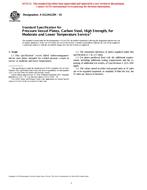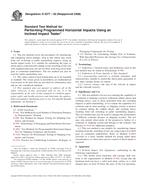1.1 This practice covers determination of the quantitative and qualitative species composition of fish in a specified area. The successful use of this technique is dependent on: (1) preventing fish from escaping the sample area and (2) retrieving all affected fish, which may take up to three days.
1.2 Advantages:
1.2.1 Easily detoxified.
1.2.2 All native freshwater fish are susceptible, but it has low toxicity to mammals and birds.
1.2.3 At low concentrations fish toxicity depends on species, age, and size.
1.2.4 The suffocating action is reversible.
1.3 Limitations:
1.3.1 It is less effective in cold (below 20°C) and highly alkaline water.
1.3.2 Smaller fish and those without air bladders usually do not float.
1.3.3 Completely random selection of sample areas is not possible.
1.3.4 Overkill beyond sample area can sometimes occur.
1.3.5 Food web organisms may be eliminated.
1.4 Applications – this practice is useful in both short- and long-term studies for management and impact assessment purposes. It is adaptable to both lotic and lentic situations in littoral and limnetic areas.
1.5 The values stated in inch-pound units are to be regarded as the standard. The values given in parentheses are for information only.
1.6 This standard does not purport to address all of the safety concerns, if any, associated with its use. It is the responsibility of the user of this standard to establish appropriate safety and health practices and determine the applicability of regulatory limitations prior to use. For specific hazards, see Section 6.
Product Details
- Published:
- 01/01/2005
- Number of Pages:
- 3
- File Size:
- 1 file , 60 KB


